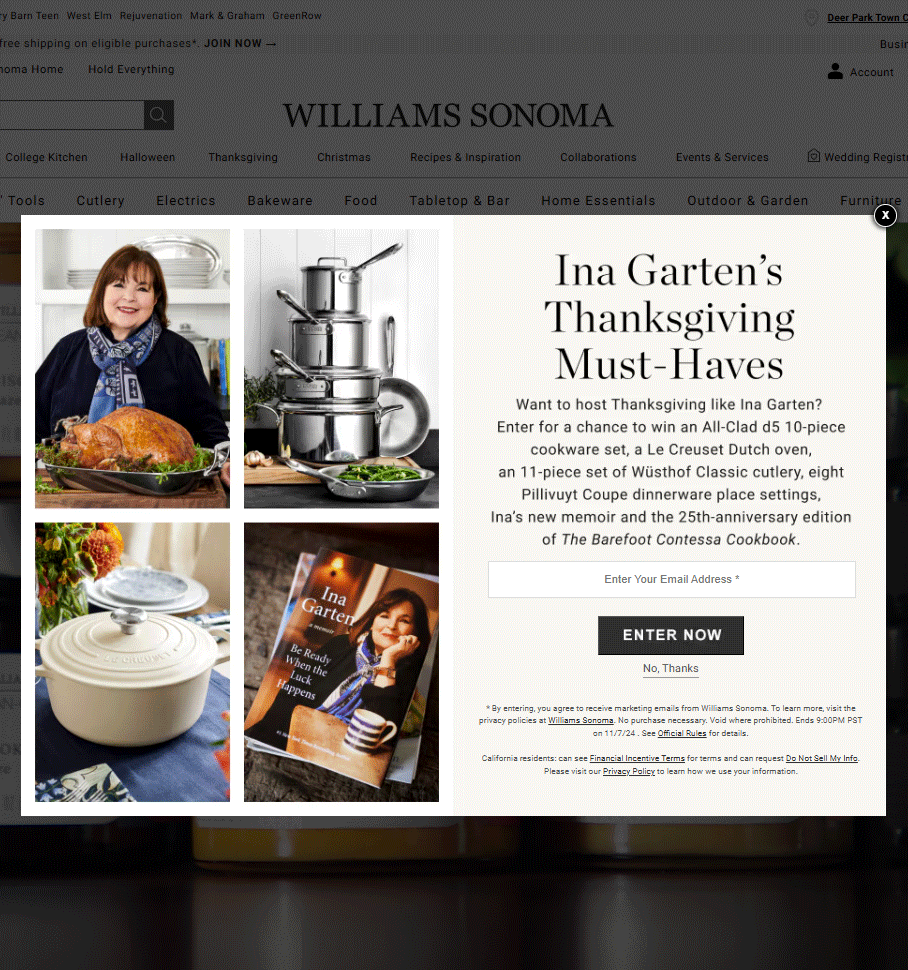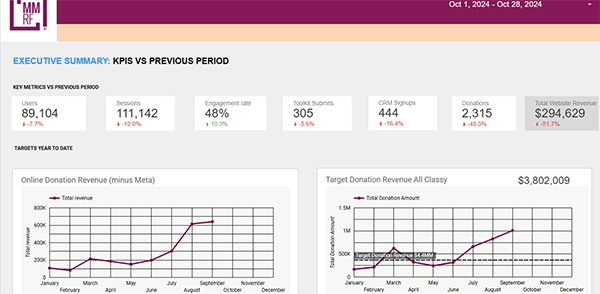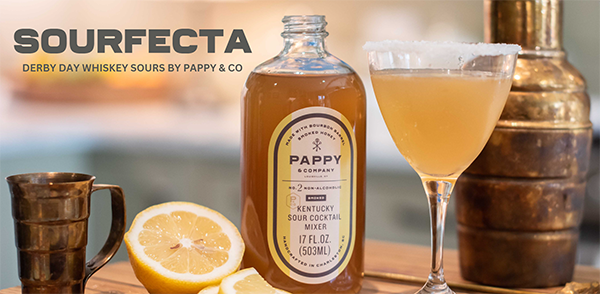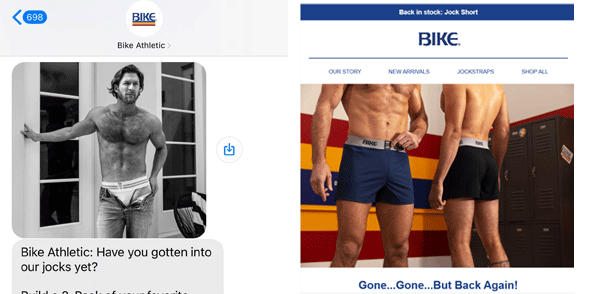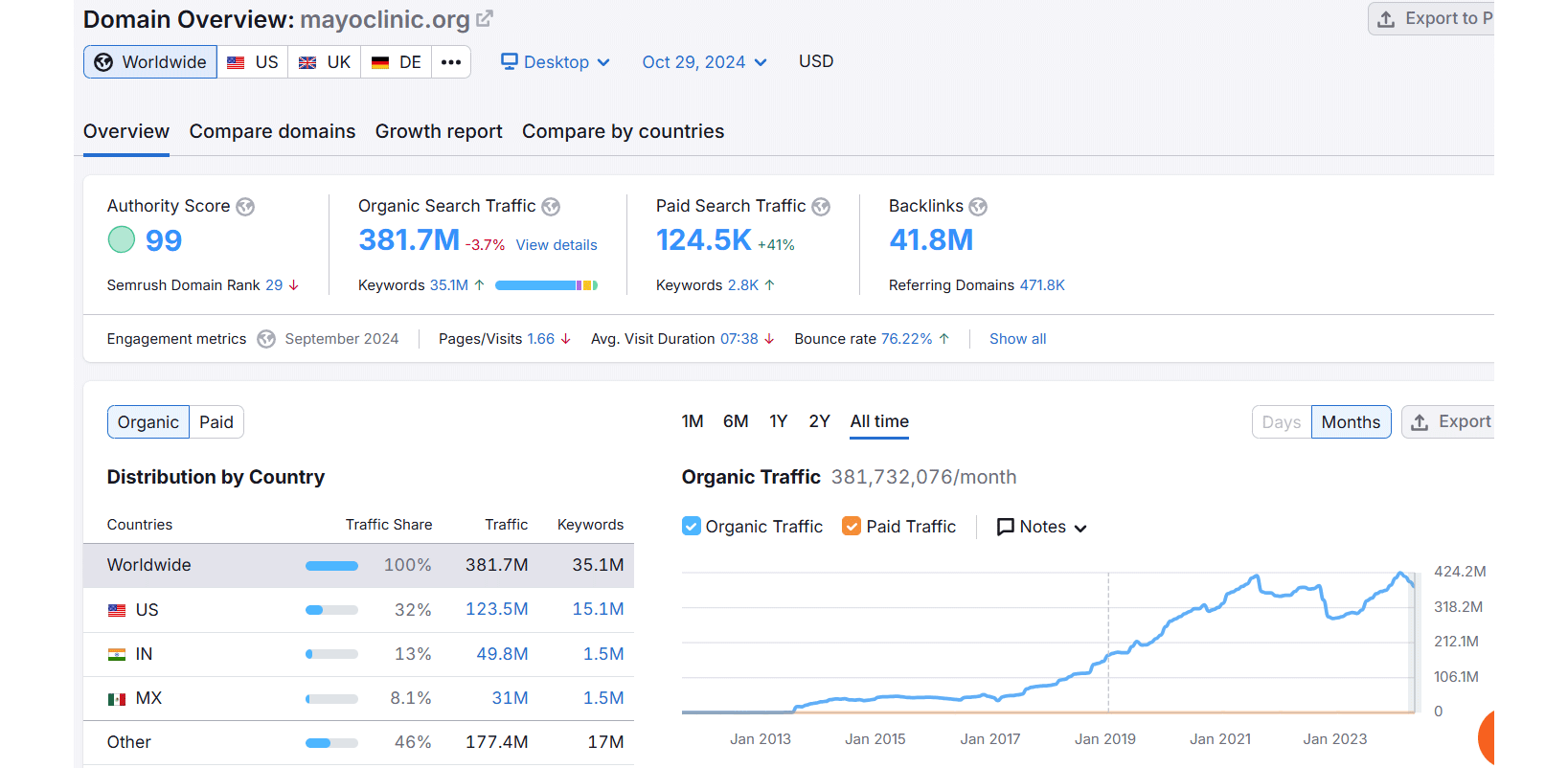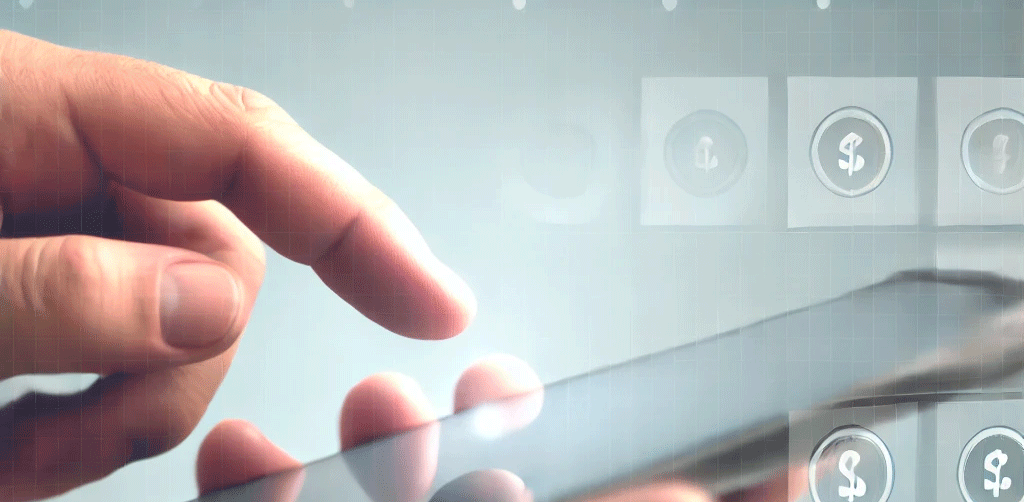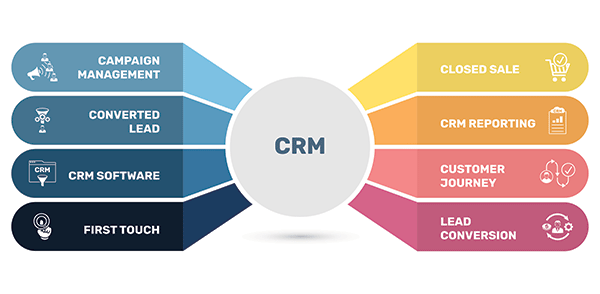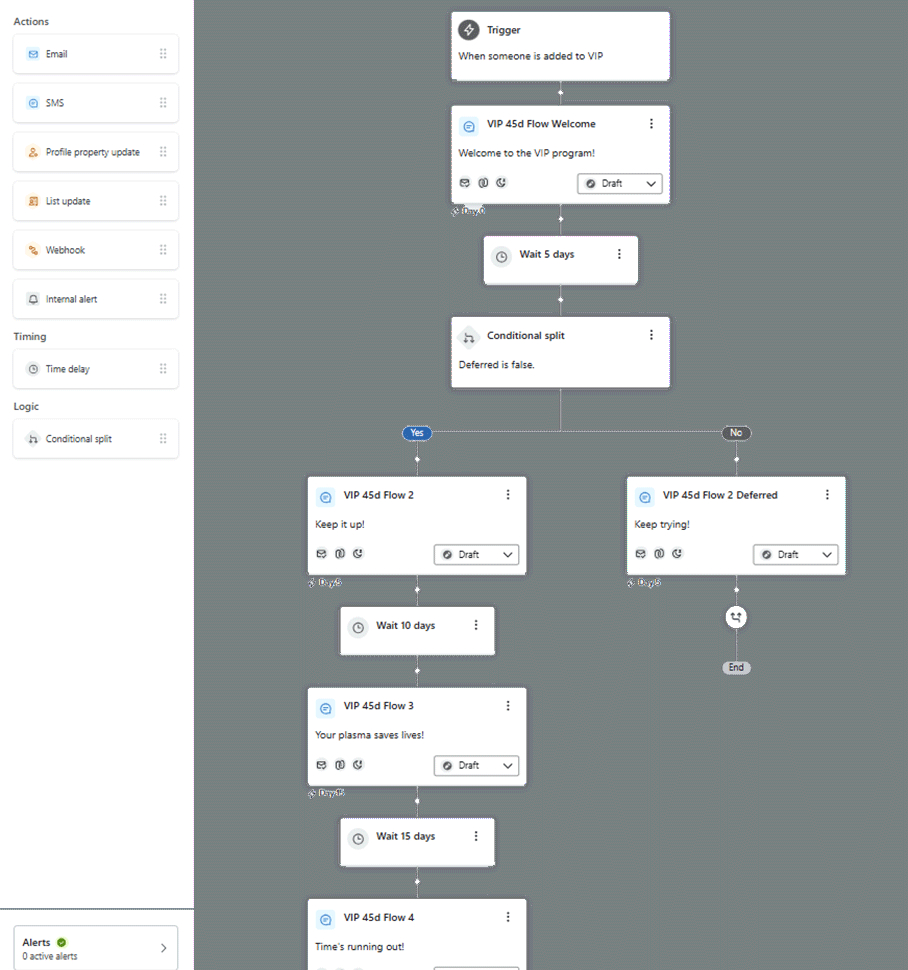
They have varying degrees of effectiveness but email/sms marketing workflows are generally a rock solid, set-it-and-forget-it conversion workhorse.
Flows, customer journeys, workflows, automations, smart campaigns – most of email/sms marketing platforms and CRMs use different terminology but they’re all essentially the same thing: automated sequences of communications (emails or SMS messages), triggered by a visitor’s actions or predefined conditions to guide them through a more personalized experience. The beauty of flows is that with some thoughtful planning and setup on the front end, they typically drive consistent, ongoing revenue and leads with little or no maintenance.
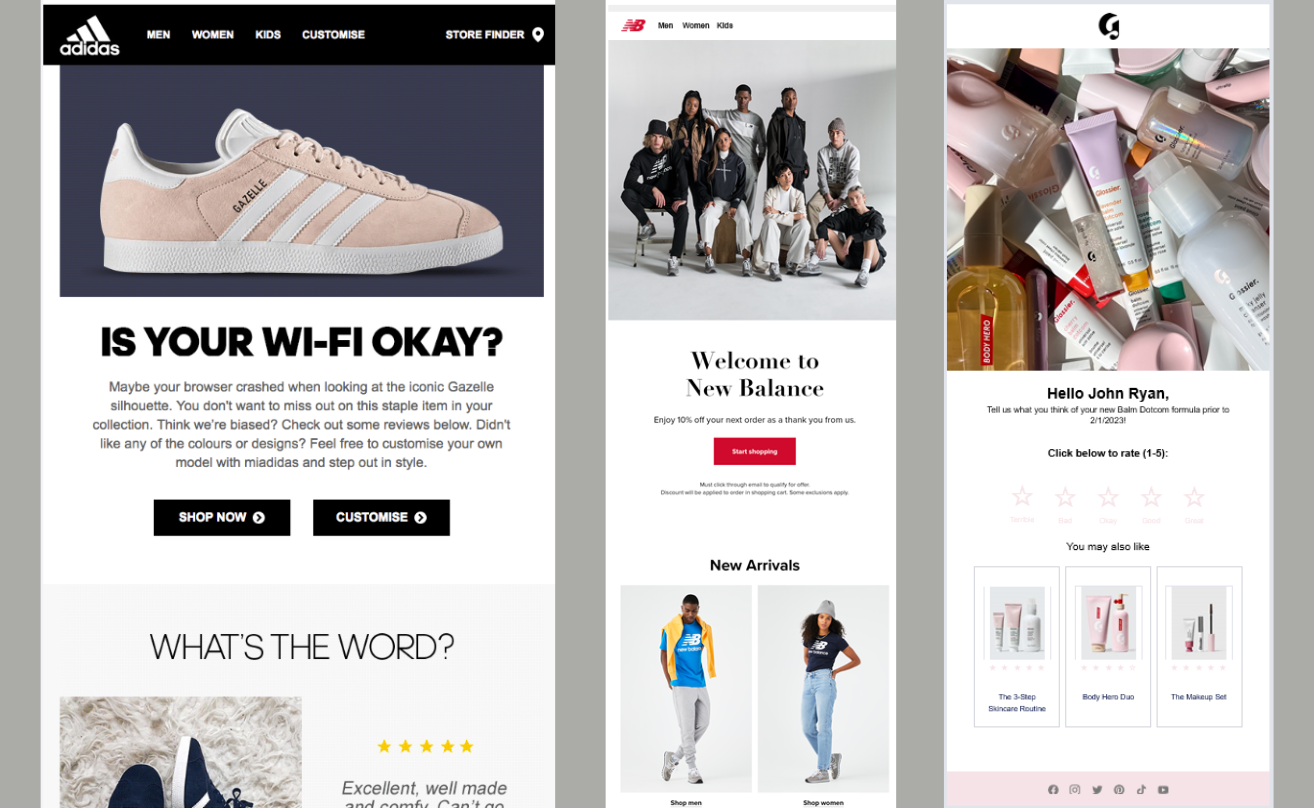
Implementation
The setup of a flow can vary based on your CRM or email/SMS platform, but they generally start with a trigger event. Common triggers include actions like abandoning a cart, downloading a whitepaper or hitting a milestone such as a birthday or renewal date. From there, the possibilities are endless. For example, a new marketing list signup might trigger a simple one-message flow offering a 10% discount, while a whitepaper download could initiate a complex series of messages tailored by region, content interest or lead score.
Key Ecommerce Flows
For ecommerce businesses, some flows are proven best practices:
- Welcome: Triggered by a signup, these multi-message flows often include conditional splits and time delays based on recipient behavior, like whether a purchase is made. They typically drive the most attributed revenue.
- Abandon Cart: Triggered when a visitor leaves items in their cart. Basic flows include two reminders spaced 24 hours apart, while more complex flows may offer incentives based on cart size or item type.
- Winback: Activated by a long lapse since a customer’s last purchase, these flows offer incentives to re-engage, with conditions based on purchase history or total order value.
Other common flows include browse abandonment, post-purchase, birthday, price drop, low inventory and more, with custom variations based on your specific ecommerce vertical.
Key B2B Flows
B2B flows differ significantly from ecommerce, often relying on CRM systems for more robust data and complex logic:
- Lead Nurturing: Aimed at warming up leads over time, these flows are triggered by actions like downloading a PDF. Messages are spaced out to introduce the company, share insights and build trust.
- Lead Qualification: Designed to gather more information and qualify leads, these flows encourage actions like completing surveys or scheduling calls. Depending on responses, leads are routed to sales or further nurturing.
- Webinar/Event Follow-Up: Tailored paths for attendees and non-attendees, featuring recaps, resources and calls to action like scheduling a demo. Engagement level determines the follow-up sequence.
B2B flows also include winbacks, new customer onboarding, feedback and advocacy, renewal, upsell flows and more.
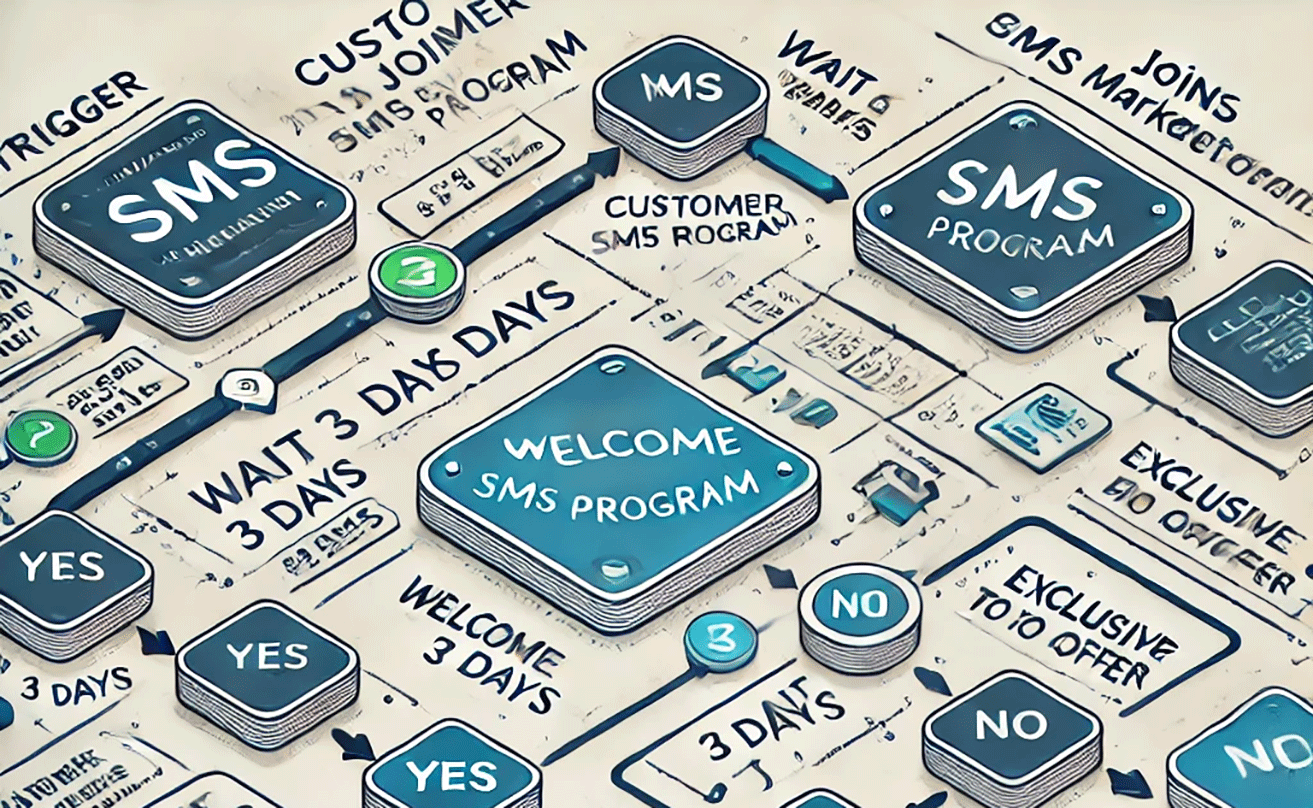
Measuring Flow Effectiveness
Monitoring flow performance is crucial as flows can overlap, cause unsubscribes or fail to convert. Key metrics include recipient counts, bounces, opens (for email), clicks, conversions, unsubscribes and spam reports (email). Analyzing these metrics, similar to standard campaign reporting, helps identify areas for optimization and improvement.
Takeaway
Flows are a powerful way to automate and personalize your marketing efforts, offering significant returns for a relatively small investment of time and resources. By setting up thoughtful, well-structured flows, you can keep your audience engaged, drive consistent revenue and gather valuable data to improve future campaigns. Whether you’re running a simple welcome flow or a sophisticated lead nurturing sequence, the key is to continuously monitor performance and adapt as needed. A well-optimized flow strategy can make a huge impact, turning potential leads into loyal customers with minimal ongoing effort.

